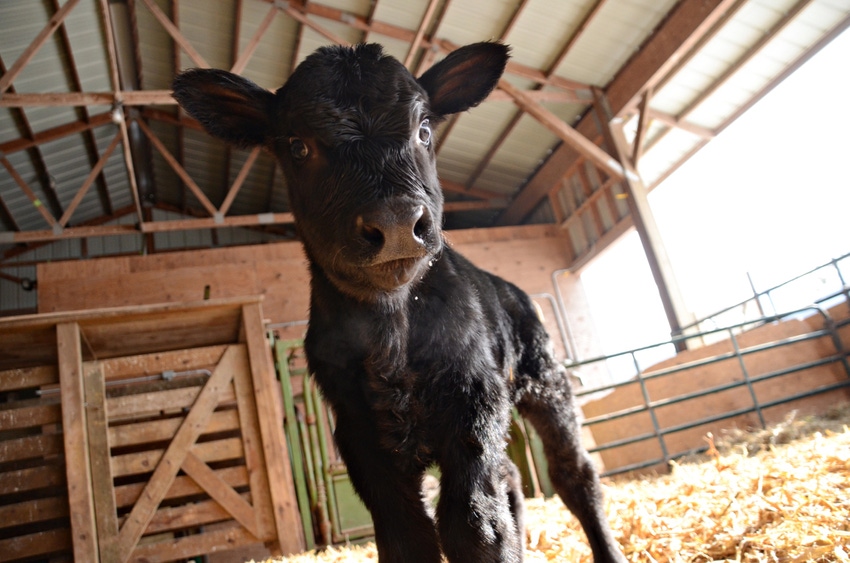The question on when to intervene or call a veterinarian after a cow or heifer goes into labor is never easy to answer, but it’s an important especially when a live calf is the end goal.
January 13, 2017

Calving time is here, or soon will be, for many cattle operations across the U.S. The good news is that in most cases, everything goes just fine. The bad news? Sometimes things go wrong. That’s when it’s time to step in and help.
“The basic rule of thumb for cows is that once the water sac has ruptured, if the calf is normal, it should be born within 30 minutes,” says Robert Callan, head of the Livestock Medicine and Surgery Service and chief of staff for the Large Animal Hospital at the Colorado State University College of Veterinary Medicine.
“In heifers, this time should be less than 60 minutes. It can take longer, for various reasons. In cows, it may be up to four hours and heifers up to eight hours, but you shouldn’t be waiting that long,” he adds. Either the calf is too big or there is a problem that takes more time for the calf to get into position.
“There are several recommendations regarding when to check a cow or heifer. I tend to be proactive and say that with a cow, if the calf is not born within 30 minutes, I give her another 30 minutes, and if the calf is not born by then or has not made noticeable progress, I provide assistance. In a heifer, I give her 90 minutes. Some people suggest that once you see the allantoic sac and the feet, you could give a heifer two hours, but we end up losing some calves if we wait that long,” he says.
“Another argument is that if you intervene too early and pull too hard, you’ll cause injury to the calf or cow.” Occasionally the placenta will detach quicker than you’d think, and if you wait too long you lose the calf. This is especially true if stage one labor was prolonged.
“Cows that go into calving season in poor body condition may take longer than normal in labor, and if you don’t help them in a timely manner you may lose those calves. I tend to be proactive in situations like this,” says Callan.
When to call the vet
“If the cervix is dilated and you reach through and feel the calf’s feet but they are not coming up into the cervix, this is another indication of a problem. Maybe the head is turned back. If you can’t feel any feet—just the bulk of the calf--it may be breech. Another situation that will hold up parturition is a torsion; you reach into the birth canal and it seems like there is a twist, with membrane between you and the calf,” says Callan.
“If the producer is inexperienced, an early call to the veterinarian will maximize the chance for a live calf, and opportunity to assist the cow before things get really difficult,” says Bethany Funnell, a clinical veterinarian at the Purdue University College of Veterinary Medicine.
There are tools veterinarians may use to make it easier. “One is to give the cow an epidural injection to stop her from straining, so she’s not pushing against you. We can also administer epinephrine, which makes the uterus relax. This makes it easier to correct a problem,” she says.
“You can learn how to deal with many problems yourself; the veterinarian can teach you how to handle certain problems and may not need to come out every time you have a question,” says George Barrington, professor of food animal medicine at the Washington State University College of Veterinary Medicine. “With a phone call, the veterinarian may be able to instruct you on what to do, or determine that it’s a problem that needs professional assistance.”
About the Author(s)
You May Also Like



